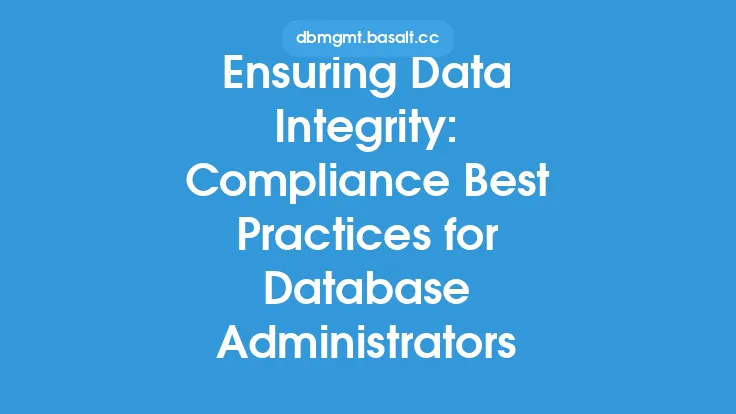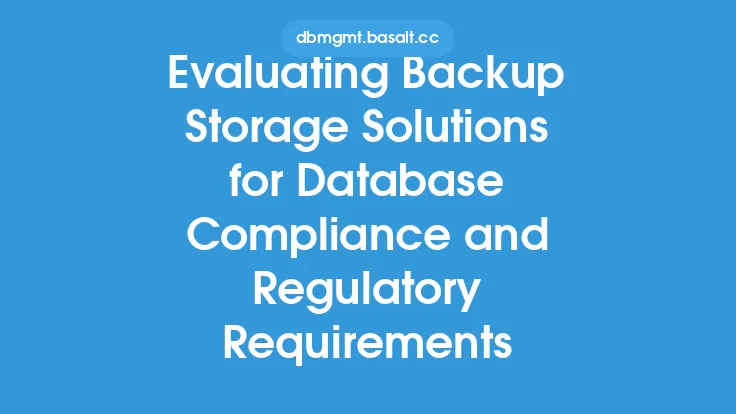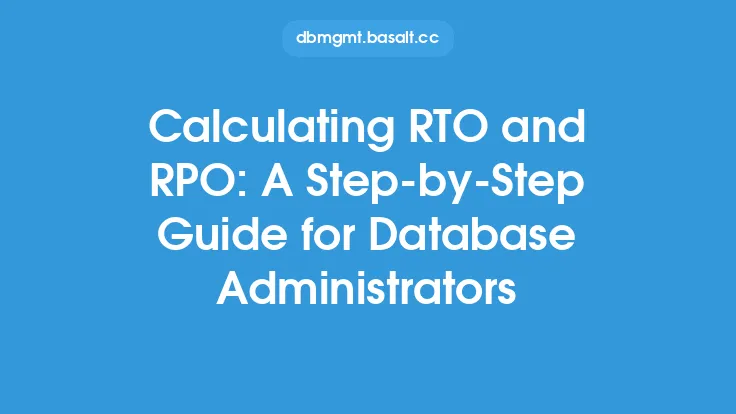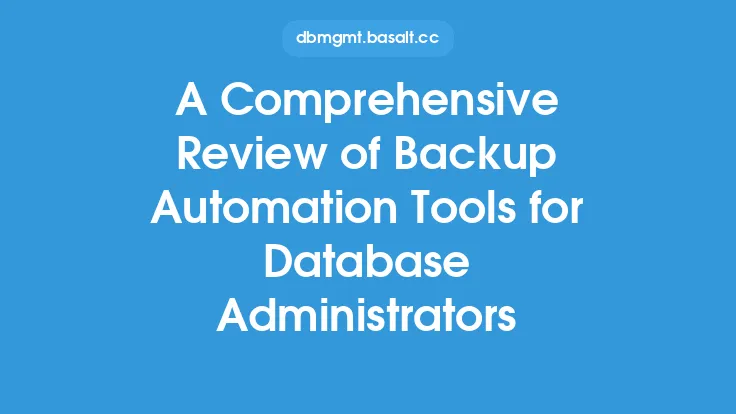As a database administrator, ensuring regulatory compliance is a critical aspect of your job. With the increasing amount of sensitive data being stored in databases, regulatory bodies have established various laws and regulations to protect this data. Database administrators must be aware of these regulations and ensure that their databases are compliant. In this article, we will discuss the key aspects of regulatory compliance for database administrators, including the importance of compliance, common regulations, and best practices for achieving compliance.
Importance of Compliance
Regulatory compliance is essential for database administrators because it helps to protect sensitive data from unauthorized access, theft, or damage. Non-compliance can result in severe penalties, fines, and damage to an organization's reputation. Moreover, compliance helps to ensure the integrity, confidentiality, and availability of data, which is critical for business operations. Database administrators must ensure that their databases are compliant with relevant regulations to avoid these risks and maintain the trust of their customers.
Common Regulations
There are several regulations that database administrators must be aware of, including:
- General Data Protection Regulation (GDPR): This regulation applies to the processing of personal data of EU citizens and requires organizations to implement measures to protect this data.
- Health Insurance Portability and Accountability Act (HIPAA): This regulation applies to the handling of protected health information (PHI) in the United States and requires organizations to implement measures to protect this data.
- Payment Card Industry Data Security Standard (PCI DSS): This regulation applies to the handling of payment card information and requires organizations to implement measures to protect this data.
- Sarbanes-Oxley Act (SOX): This regulation applies to publicly traded companies in the United States and requires them to implement measures to protect financial data.
Database administrators must be aware of these regulations and ensure that their databases are compliant.
Best Practices for Achieving Compliance
To achieve regulatory compliance, database administrators can follow several best practices, including:
- Implementing access controls: Database administrators should implement access controls to ensure that only authorized personnel have access to sensitive data.
- Encrypting data: Database administrators should encrypt sensitive data to protect it from unauthorized access.
- Implementing auditing and logging: Database administrators should implement auditing and logging to track all access to sensitive data.
- Implementing backups and disaster recovery: Database administrators should implement backups and disaster recovery to ensure the availability of data in case of a disaster.
- Conducting regular security assessments: Database administrators should conduct regular security assessments to identify vulnerabilities and address them before they can be exploited.
- Implementing secure coding practices: Database administrators should implement secure coding practices to prevent SQL injection and other types of attacks.
- Implementing data loss prevention: Database administrators should implement data loss prevention to prevent sensitive data from being leaked or stolen.
Technical Implementation
To implement these best practices, database administrators can use various technical tools and techniques, including:
- SQL Server Audit: This feature allows database administrators to track all access to sensitive data and identify potential security threats.
- Transparent Data Encryption (TDE): This feature allows database administrators to encrypt sensitive data at rest.
- Row-Level Security (RLS): This feature allows database administrators to implement access controls at the row level.
- Dynamic Data Masking (DDM): This feature allows database administrators to mask sensitive data to prevent it from being accessed by unauthorized personnel.
- SQL Server Always Encrypted: This feature allows database administrators to encrypt sensitive data in use.
Compliance Tools and Technologies
There are several tools and technologies that database administrators can use to achieve regulatory compliance, including:
- Compliance management software: This software helps database administrators to track and manage compliance with relevant regulations.
- Vulnerability scanning tools: These tools help database administrators to identify vulnerabilities in their databases and address them before they can be exploited.
- Penetration testing tools: These tools help database administrators to simulate attacks on their databases and identify potential security threats.
- Data loss prevention tools: These tools help database administrators to prevent sensitive data from being leaked or stolen.
- Encryption tools: These tools help database administrators to encrypt sensitive data and protect it from unauthorized access.
Conclusion
Regulatory compliance is a critical aspect of database administration, and database administrators must be aware of the regulations that apply to their databases. By following best practices and using technical tools and techniques, database administrators can ensure that their databases are compliant with relevant regulations and protect sensitive data from unauthorized access, theft, or damage. Remember, compliance is an ongoing process, and database administrators must continually monitor and assess their databases to ensure that they remain compliant.





